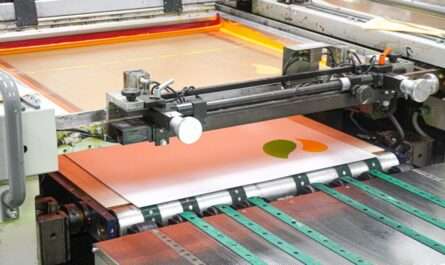A smart machine can be defined as a physical system embedded with various technologies that allows it to operate with some degree of autonomy. Smart machines are powered by artificial intelligence (AI) which allows them to sense their environment, learn from experiences, and take actions in order to achieve goals and perform tasks with a certain level of independence. Some key characteristics of these machines include their ability to adapt to changes, solve complex problems, and complete tasks without being explicitly programmed.
Applications of Smart Machines in Various
These Smart Machines are being implemented across a wide range of industries to enhance efficiency and productivity. Here are some of the major ways smart machines are being used:
Manufacturing
Industrial robots powered by AI are commonly used in manufacturing plants for tasks like welding, assembling, and packaging. Their precision and ability to work continuously has significantly increased production volumes while reducing costs. Smart robots can learn from their mistakes, sense abnormalities in production processes, and autonomously address issues – helping minimize delays and downtime on the factory floor. Advanced machines are allowing greater automation throughout the supply chain from raw material handling to quality inspection.
Agriculture
Precision agriculture using smart technologies allows optimized pesticide and irrigation management based on terrain conditions, soil analysis, and crop requirements. Autonomous tractors and harvesters guided by AI and computer vision are being adopted to reduce labor needs for tasks like planting, weeding, fertilizing and harvesting. Livestock monitoring systems powered by IoT sensors and predictive analytics help detect diseases early and ensure animal welfare. Drones and smart greenhouses further enhance yields.
Healthcare
Medical robotics has helped perform minimally invasive surgeries like laparoscopy with greater accuracy compared to human capabilities. AI is used for imaging and medical diagnostics by analyzing complex patient data patterns. Assistive robots for rehabilitation, elderly care and remote patient monitoring are improving access and quality of care. Predictive healthcare using big data analytics allows personalized treatment by identifying risks and recommending preventive actions.
Smart Cities and Infrastructure
Intelligent transportation systems use IoT, computer vision and machine learning for applications like traffic management, intelligent street lighting, emergency response and autonomous vehicles. Connected infrastructure powered by 5G enables smart waste disposal, water distribution and energy grids. Drones help in areas like surveillance, emergency response and infrastructure inspection while reducing human intervention in hazardous conditions. Advanced robotics is automating tasks such as maintenance, construction, and remote inspection of pipelines, tunnels and utilities.
Education
Adaptive learning powered by AI tailors the educational experience based on individual needs, helping students learn at their own pace. Virtual tutors are being used for supplementary instruction. Educational robots foster STEM skills in young minds through interactive learning. Intelligent assessment analyzes student performance to provide timely feedback for improving learning outcomes. AI proctors are reducing costs associated with traditionalexam invigilation.
Future Potential of Smart Machines
While smart machines are already revolutionizing various sectors, their potential is immense as technologies continue to progress at an exponential rate. Here are some areas where AI-powered systems could make a major impact:
Healthcare – Advanced robotics, virtual assistants, medical nanobots, AI diagnostics and personalized treatment protocols hold promise to transform healthcare delivery. Wearable sensors, telemedicine and virtual reality therapy could drive wide access to quality care.
Agriculture – Future farms will be completely automated and productivity will leapfrog with technologies like predictive field analysis, autonomous farming equipment, gene editing, computer vision guided crop management and indoor vertical farming powered by IoT and robotics. Livestock monitoring will ensure optimum health and quality yield.
Space Exploration – Intelligent robots will drive greater discovery by building bases, producing resources and conducting repairs in deep space and harsh environments like Mars. Autonomous vehicles will transform space mining and interplanetary logistics for a self-sustaining space economy. AI could devise novel solutions to challenges like deep space communication.
Manufacturing – Full-scale industrial automation using robot swarms guided by predictive maintenance will greatly boost output while bringing manufacturing closer to consumption points for reduced logistics dependencies. 3D-printing advanced materials will enable decentralized on-demand production in fields like aerospace. Computer vision quality assurance will enable near-zero defect manufacturing.
Smart Environments – Ubiquitous IoT sensors and AI optimization will enable operational autonomy across smart cities, intelligent homes and virtual assistants dedicated to lifestyle, governance, utilities, media, transportation and productivity services. Cloud robotics as a service via 5G could drive further transformation towards an experience-based shared and circular economy.
Given the vast possibilities, smart machines powered by exponential technologies hold the potential to revolutionize all aspects of society, culture and the human experience in radically beneficial ways while addressing many of humanity’s most pressing challenges if developed and applied judiciously with strong regulatory oversight focusing on ethics, security, transparency, fairness and human wellbeing. Overall, the future prospects seem highly promising for continuous societal progress through synergies between human and artificial intelligence. Convergence of technologies will likely drive even more transformative possibilities that may go well beyond what we can currently foresee.
*Note:
1. Source: Coherent Market Insights, Public sources, Desk research
2. We have leveraged AI tools to mine information and compile it.
About Author - Ravina Pandya
Ravina Pandya, a content writer, has a strong foothold in the market research industry. She specializes in writing well-researched articles from different industries, including food and beverages, information and technology, healthcare, chemicals and materials, etc. With an MBA in E-commerce, she has expertise in SEO-optimized content that resonates with industry professionals. LinkedIn Profile



